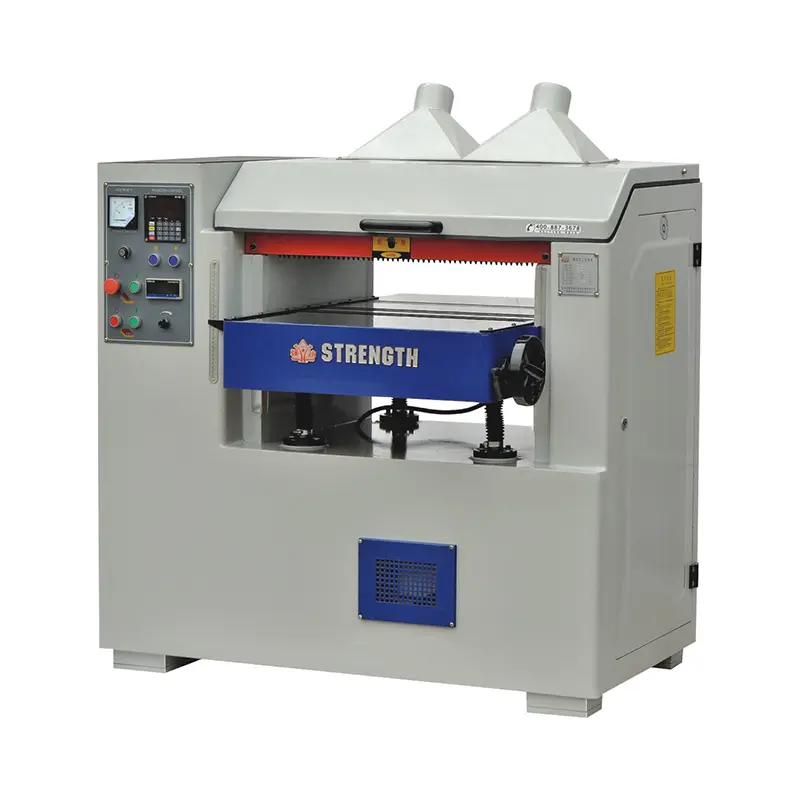The Importance of the Knife Head in a Thickness Planer
Introduction
In the world of woodworking, precision and efficiency are paramount. One tool that stands out in achieving these goals is the thickness planer. This powerful machine is designed to ensure that pieces of wood are uniformly thick and smooth, making it an essential tool for both hobbyists and professionals. However, the heart of any thickness planer lies in its knife head. This critical component is responsible for the quality of the cut, the smoothness of the surface, and ultimately, the overall performance of the machine. In this blog post, we will delve into the importance of the knife head in a thickness planer, exploring its various aspects, types, maintenance, and impact on the final product.
The Role of the Knife Head
The knife head, also known as the cutter head, is the central part of a thickness planer where the actual cutting takes place. It houses the knives that shave off thin layers of wood to achieve the desired thickness. The design and quality of the knife head directly influence several key factors:
Surface Finish
A well-designed knife head ensures a smooth and even surface finish. High-quality knife heads, such as those with carbide inserts, produce a near-glass-like finish, significantly reducing the need for additional sanding. This not only saves time but also enhances the overall quality of the final product.
Cutting Efficiency
The efficiency of the cutting process is another crucial aspect influenced by the knife head. A sharp and properly aligned knife head allows for cleaner and more efficient cuts, reducing the amount of power required by the machine. This translates to lower energy consumption and less wear and tear on the motor.
Noise Reduction
Modern knife heads, particularly spiral cutter heads, are designed to operate more quietly than traditional straight-knife heads. The shearing action of spiral cutter heads reduces noise levels, creating a more pleasant working environment.
Chip Removal and Dust Control
Effective chip removal is essential for maintaining the performance of the planer. A good knife head design ensures that wood chips are efficiently removed from the cutting area, preventing clogging and improving dust collection. This not only keeps the machine running smoothly but also enhances safety by reducing the risk of chip accumulation.
Minimized Tear-Out
Tear-out, or the splintering of wood fibers, is a common issue in woodworking. A high-quality knife head minimizes tear-out, especially on woods with difficult grain patterns. This is particularly important for achieving professional-looking results and reducing waste.
Types of Knife Heads
There are several types of knife heads available, each with its own set of advantages and disadvantages. Understanding these differences can help you choose the right one for your specific needs.
Straight-Knife Cutter Heads
Straight-knife cutter heads are the most traditional type, featuring two to four parallel knives. They are generally less expensive and easier to sharpen but can produce more noise and tear-out. These are suitable for general woodworking tasks but may not be ideal for high-precision work.
Spiral Cutter Heads
Spiral cutter heads have knives arranged in a spiral pattern. This design offers several advantages, including a smoother surface finish, reduced noise, and better chip removal. Additionally, spiral cutter heads are less likely to cause tear-out, making them suitable for working with hardwoods and exotic woods. The individual carbide inserts can be rotated and replaced as needed, extending the life of the cutter head and reducing maintenance costs.
Segmented Modular Cutter Heads
Segmented modular cutter heads combine the benefits of spiral cutter heads with the simplicity of straight-knife heads. They consist of multiple segments that can be individually replaced, making maintenance easier and more cost-effective. This type of cutter head is particularly useful for industrial applications where high volume and consistent performance are required.
Double-Sided Disposable Blade Heads
Double-sided disposable blade heads feature blades that can be flipped over once one side becomes dull. When both sides are worn out, the blade is replaced entirely. This type of cutter head is suitable for short-term projects and budget-conscious users but may not offer the same longevity as carbide insert heads.
The Impact of Knife Head Quality on Performance
The quality of the knife head has a direct impact on the performance of the thickness planer. High-quality knife heads, made from materials like carbide or ceramic, offer several benefits:
Enhanced Cutting Efficiency
High-quality knives with low roughness and reduced waviness ensure a more efficient cutting process. Proper sharpening angles and coatings further enhance performance by reducing friction and wear.
Improved Surface Finish
The surface finish achieved with a high-quality knife head is significantly better than that of a lower-quality one. This reduces the need for additional sanding and finishing, saving both time and effort.
Extended Tool Life
Using appropriate materials and coatings can extend the life of the knife head. For example, carbide inserts are known for their durability and ability to maintain sharpness over extended periods.
Reduced Maintenance
High-quality knife heads require less frequent maintenance and are easier to clean and sharpen. This reduces downtime and ensures that the planer is always ready for use.
Maintenance and Care of Knife Heads
Proper maintenance is essential for ensuring the longevity and performance of the knife head. Here are some key steps to follow:
Regular Inspection and Sharpening
Regularly inspect the knives for nicks or dullness. Dull or chipped blades should be replaced promptly to maintain optimal performance.
Post time: Aug-22-2025

